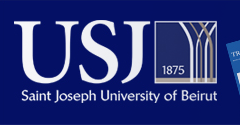Al-Kīmiyā
Keywords
Moroccan French-speaking literature, heterolingualism, transculturality, phraseology, linguistic creativity
Document Type
Article
Abstract
This article examines the literary language of Elisa Chimenti (1883-1969), which is full of xenisms, linguistic loans, metaphors, and idioms that stem from a transcultural and heterolingual imaginary. Her novel Au cœur du harem (Éditions du Scorpion, 1958), translated into Italian in 2000 under the supervision of Emanuela Benini (Edizioni E/O), is a striking example. Drawing on a differential comparative approach (Heidmann, 2017), we look at these texts to reflect on Elisa Chimenti’s literary language and to examine the translational stakes of her work and its heterolingualism (Grutman, 1997; Suchet, 2014).
English title
Au cœur du harem (In the Heart of the Harem) and of the Linguistic Blending of Elisa Chimenti. Differential Comparison and Linguistic Decentering
Résumé
Cette contribution étudie la langue littéraire d’Elisa Chimenti (1883-1969), riche en xénismes, emprunts, métaphores et expressions idiomatiques qui découlent de son imaginaire transculturel et hétérolingue. Son roman Au cœur du harem (Éditions du Scorpion, 1958), traduit en italien sous la direction d’Emanuela Benini en 2000 (Edizioni E/O), en est un exemple frappant. En nous appuyant sur une approche comparative différentielle (Heidmann, 2017), nous nous penchons sur ces textes afin de réfléchir à la langue littéraire d’Elisa Chimenti et d’examiner les enjeux traductifs de son œuvre et de son hétérolinguisme (Grutman, 1997 ; Suchet, 2014).
Mots-clés
Littérature marocaine d’expression française, Hétérolinguisme, Transculturalité, Phraséologie, Créativité langagière
Recommended Citation
Amenta, Pierpaolo
(2025)
"« Au cœur du harem » et du métissage linguistique d’Elisa Chimenti en italien : comparaison différentielle et décentrement linguistique,"
Al-Kīmiyā, (25), 9-23.
Available at:
https://e-journals.usj.edu.lb/alkimiya/vol25/iss25/2
Included in
International and Intercultural Communication Commons, Language Interpretation and Translation Commons, Linguistics Commons


